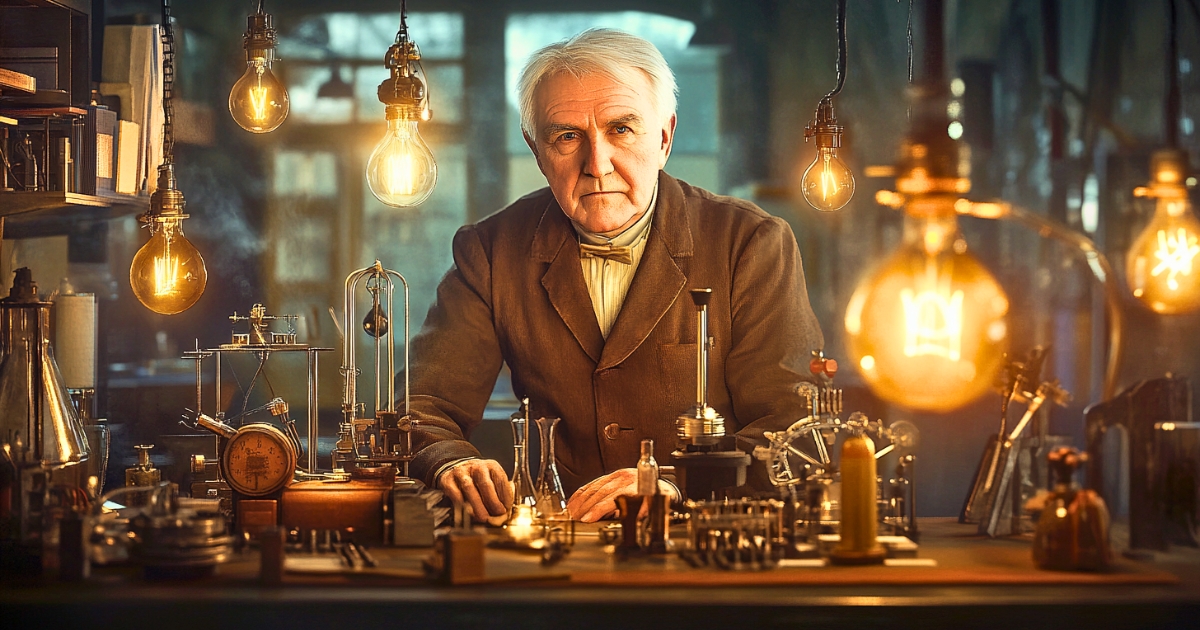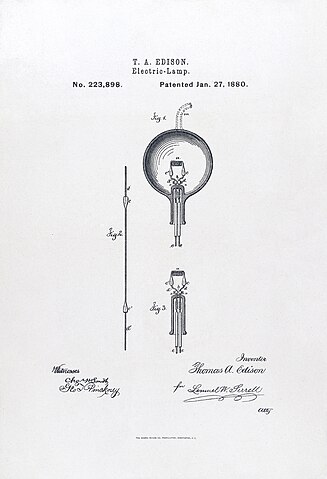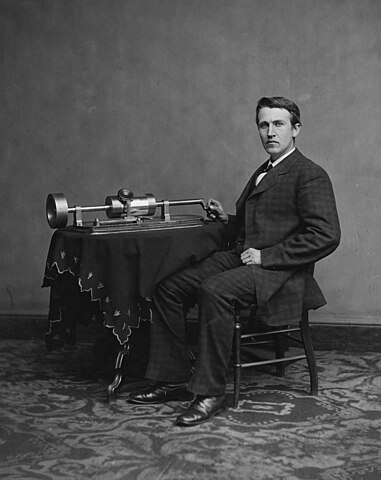Thomas Alva Edison. Many people think of innovative inventions like the light bulb, phonograph, and motion pictures when they hear his name. However, few know that behind his success lies countless failures and setbacks. While Edison obtained about 1,093 patents in his lifetime, there are records of over 3,000 failures behind them. In this article, we’ll focus on these “failure notebooks,” analyzing the thought processes and problem-solving approaches of this genius inventor, and explore lessons that can be applied to modern business and education.
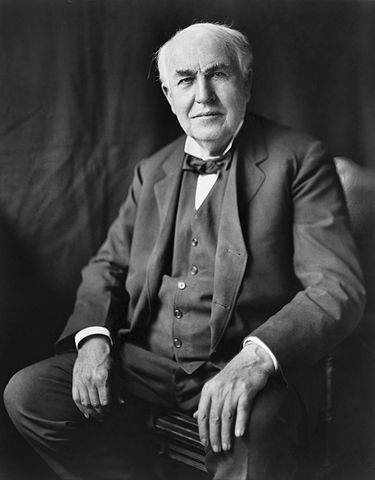
Thomas Edison, King of Invention (1847-1931)
What are Edison’s “Failure Notebooks”?
Edison’s “failure notebooks” are detailed records of all the failures, mistakes, and dead ends he encountered during his experiments and development processes. These notebooks aren’t just lists of failures; they meticulously document insights gained from each failure and ideas for next steps. Edison viewed failures as “finding 10,000 ways to reach success,” using these notebooks to organize his thoughts and find paths to problem-solving.
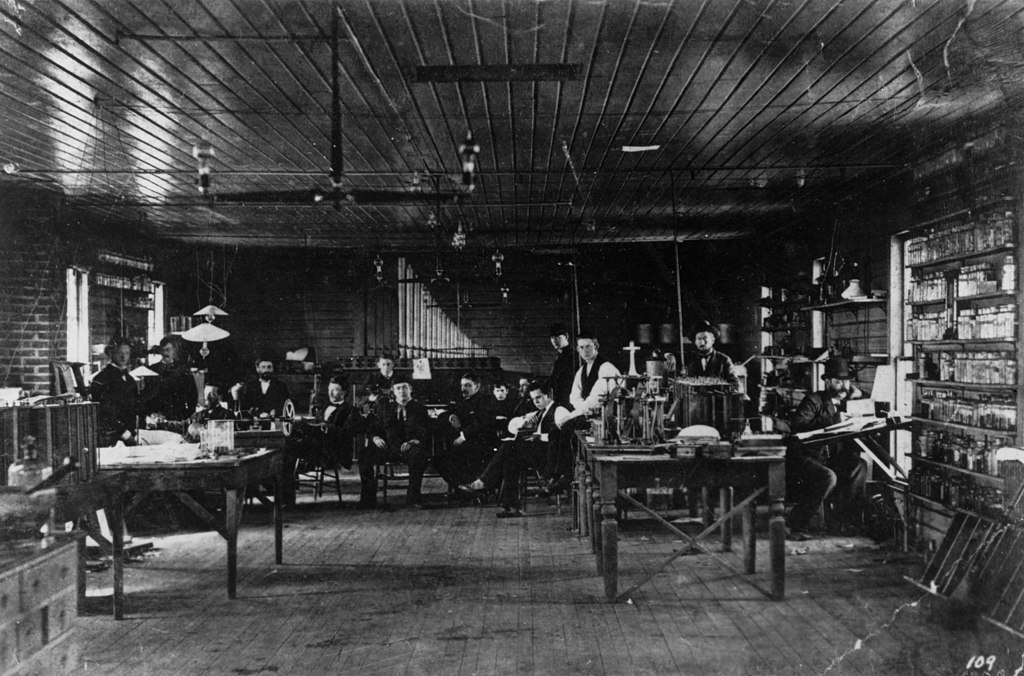
Edison and his assistants in the Menlo Park laboratory.
The contents of Edison’s failure notebooks are diverse. They reflect his wide-ranging interests and inquisitive mind, including experimental results for light bulb filament materials, various attempts to improve phonograph sound quality, and even failures in ore mining methods. These notebooks were shared with many engineers and scientists working in Edison’s laboratory, greatly contributing to the accumulation of knowledge and problem-solving abilities of the entire team.
Specific Examples from the Failure Notebooks
- Light Bulb Filament Experiments
U.S. Patent No. 223,898: Electric Lamp, issued January 27, 1880. Diagram of Edison’s patented light bulb design.
In developing the light bulb, Edison tried over 6,000 plant-based materials before finding a suitable filament. The failure notebooks detail the burning time, brightness, and durability of each material. For example, a carbonized cotton thread filament burned for over 40 hours but was not bright enough. Bamboo improved brightness but had durability issues. Through these repeated failures, Edison finally arrived at the method of using carbonized bamboo.
- Improving Phonograph Sound Quality
Edison with his invented phonograph. He produced the second model of the phonograph in April 1878 at Matthew Brady’s studio in Washington, D.C.
The phonograph development process recorded numerous failures in improving sound quality. For instance, early phonographs used tin foil, but the playback sound was unclear. Edison tried various materials (paper, wood, metals) and shapes (cylindrical, flat), recording the sound quality and durability of each. In one experiment, using a wax cylinder improved sound quality but had durability issues. Through these failures, he eventually developed a composite material of wax and metal.
- Improving Ore Mining Techniques
Edison also worked on improving ore mining efficiency. The failure notebooks record various grinding methods and separation techniques. For example, when using magnetic separation, iron ore recovery rate improved, but energy consumption was too high. Chemical separation methods raised environmental concerns. Through these failures, Edison eventually developed an environmentally considerate and efficient mining method.
Edison’s Attitude Towards Learning from Failure
Edison’s attitude towards failure is summed up in his famous quote: “I have not failed. I’ve just found 10,000 ways that won’t work.” This statement succinctly expresses the importance of continuing to challenge without fearing failure.
For Edison, failure wasn’t merely a result, but a learning opportunity and a step towards the next success. Through failures, he learned what didn’t work, used that to form new hypotheses, and continued experimenting. This iterative process became the driving force behind his innovative inventions.
Innovation Secrets Learned from Edison’s Failure Studies
The innovation secrets that can be gleaned from Edison’s failure notebooks can be summarized as follows:
1. Sustained Curiosity
Edison maintained a vigorous curiosity throughout his life. His failure notebooks contain experimental records from not just electricity and acoustics, but diverse fields including chemistry, metallurgy, and botany. This wide-ranging interest led to the creation of innovative ideas that transcended fields.
2. Systematic Approach
Edison’s experiments were never haphazard, but meticulously planned and systematically executed. The failure notebooks contain detailed records of conditions, results, and observations for each experiment, which were used to design subsequent experiments. This methodology forms the basis of modern scientific methods.
3. Emphasis on Teamwork
Edison didn’t work alone but led research with a team of engineers and scientists with diverse expertise. The failure notebooks weren’t personal records but functioned as tools shared and discussed by the entire team. This utilization of collective wisdom enabled the solution of complex problems.
4. Fostering a Culture Unafraid of Failure
In Edison’s laboratory, a culture took root where failures weren’t shameful but actively shared and learned from. This culture became the foundation for generating innovative ideas.
5. Persistence and Patience
Behind Edison’s success lies extraordinary persistence and patience. His attitude of not giving up despite thousands of failures in developing the light bulb demonstrates that innovation requires time and effort.
Applying Edison’s Failure Studies to Modern Times
Edison’s failure studies offer many insights for today’s business and educational worlds. Below, we’ll explain in detail how Edison’s approach can be applied to specific challenges facing modern society.
1. Building an Innovation Culture
Modern companies can promote innovation by fostering a culture that tolerates failure and learns from it. For example, Google’s “20% rule” (a system allowing employees to spend 20% of their work time on free projects) is a good example of applying Edison’s culture unafraid of failure to modern times. This system has given birth to innovative products like Gmail and Google News.
2. The Importance of Failure in Education
While modern education systems tend to focus on seeking correct answers, Edison’s failure studies teach us the importance of trial and error. For instance, Finland’s education system views failure as a learning opportunity, nurturing students’ creativity and problem-solving abilities. This approach contributes to developing human resources capable of adapting to rapidly changing societies.
3. Adopting a Systematic Problem-Solving Approach
Edison’s systematic approach is effective for complex modern challenges like climate change. For example, in the development of renewable energy, the method of systematically testing various combinations of materials and technologies to find optimal solutions is similar to Edison’s light bulb development process.
4. The Importance of Cross-Disciplinary Knowledge
Modern technological innovations, such as AI development, require the fusion of knowledge from multiple fields. Edison’s wide-ranging interests and knowledge are qualities sought after in modern innovators. For example, Tesla’s Elon Musk is innovating in diverse fields including electric vehicles, space development, and neuroscience.
5. The Importance of Record-Keeping
In the age of big data, Edison’s habit of detailed record-keeping is extremely important. For instance, in pharmaceutical companies’ clinical trials, recording and analyzing all data, including failures, improves the efficiency of new drug development.
6. Application to Sustainable Development
Edison’s persistent experimental spirit can be applied to achieving Sustainable Development Goals (SDGs). For example, in developing plastic alternatives, like Edison’s light bulb filament development, it’s necessary to systematically test numerous combinations of materials and manufacturing methods. The attitude of turning “failures” in this process into the next innovation is crucial.
7. Utilization in the Medical Field
Edison’s approach is also being utilized in solving modern medical challenges, such as COVID-19 vaccine development. The method of systematically testing numerous candidate substances and meticulously recording and analyzing the results can be seen as a modern version of Edison’s failure notebooks.
Conclusion: 3,000 Failures Illuminating the Future
Edison’s “failure notebooks” are not mere records of the past. They are a valuable heritage demonstrating the essence of innovation and the infinite possibilities of human creativity. One success born from over 3,000 failures. This process is filled with an unyielding spirit, an attitude of continuous learning, and the courage to not fear failure.
Modern society is changing at an unprecedented speed and facing new challenges. Solving issues facing humanity such as climate change, energy problems, and population issues requires innovative thinking and persistence like Edison’s. His failure studies provide us with important guidelines as we face these challenges.
Don’t fear failure, learn from it, and take the next step. The 3,000 lessons left by Edison will continue to give courage and hope to all those pursuing innovation. Perhaps the best way to respect Edison’s legacy is for each of us to keep our own “failure notebook,” learn from it, and grow.
Edison said, “If we all did the things we are capable of doing, we would literally astound ourselves.” These words embody the essence of his failure studies and are the key to opening up the future.
